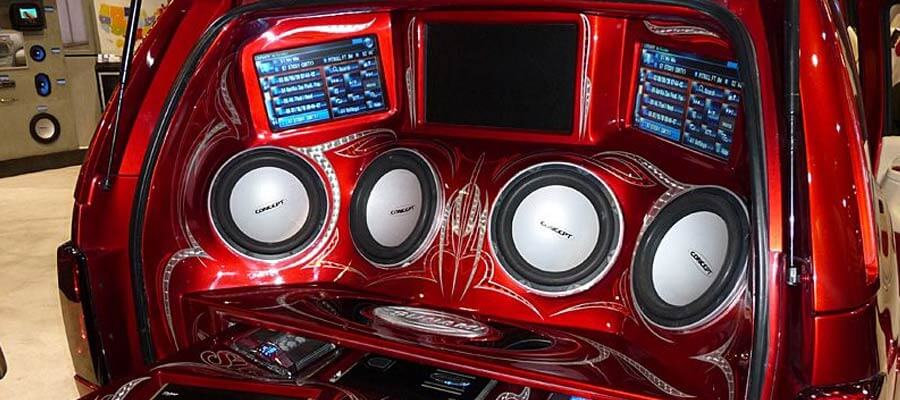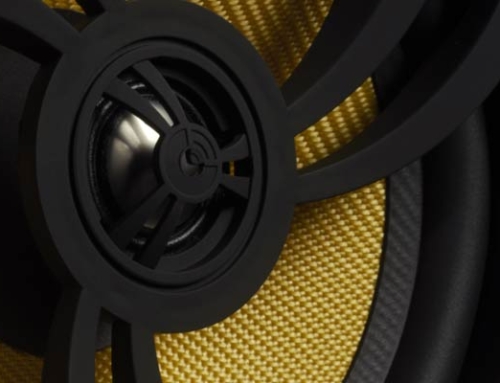
The world of car audio enthusiasts and home theater aficionados often revolves around a crucial question: Are 10-inch subwoofers loud enough? As one of the most popular sizes in the subwoofer market, the 10-inch sub has garnered significant attention for its balance between size, power, and overall performance.
In this comprehensive exploration, we’ll delve into the characteristics of 10-inch subwoofers, examining their loudness, impact, and suitability for various applications.
What are Subwoofers?
Before delving into the specifics of 10-inch subwoofers, let’s establish a fundamental understanding of subwoofers in general. Subwoofers are specialized speakers designed to reproduce low-frequency sounds, commonly known as bass. Their primary purpose is to enhance the audio experience by delivering deep, powerful, and resonant low-frequency tones that standard speakers cannot reproduce effectively. Subwoofers are categorized by their size, with common options ranging from 8 to 18 inches in diameter. The size of a subwoofer plays a pivotal role in determining its overall performance, including its ability to produce loud and impactful bass.
What is the Significance of Subwoofer Size?
The size of a subwoofer directly influences its ability to move air and generate low-frequency sounds. Larger subwoofers generally have a greater surface area, allowing them to displace more air, resulting in deeper and more resonant bass. However, the relationship between size and loudness isn’t entirely linear, as other factors such as power handling, enclosure design, and driver quality also play crucial roles. Smaller subwoofers, such as 8 or 10-inch variants, are often favored for their versatility and space-saving attributes. In particular, the 10-inch subwoofer strikes a balance between compactness and the ability to deliver robust bass, making it a popular choice for various audio setups.
Are 10-inch subs loud?
When evaluating the loudness of a subwoofer, several factors come into play. One key factor is the power handling capacity of the subwoofer, measured in watts. A higher wattage generally allows the subwoofer to handle more power, resulting in louder and more impactful bass.
10-inch subwoofers typically have varying power handling capabilities, ranging from around 200 to 1000 watts or more. The power handling capacity of a subwoofer should align with the amplifier’s output to ensure optimal performance and prevent damage to the subwoofer. Another crucial element affecting loudness is the subwoofer’s efficiency, often measured as sensitivity in decibels (dB). The sensitivity indicates how effectively a subwoofer converts power into sound, with higher sensitivity values resulting in louder output for a given amount of power.
While larger subwoofers may have an advantage in terms of moving more air, well-designed 10-inch subwoofers can still produce impressive levels of bass. The key is to consider the subwoofer’s overall design, power handling, and sensitivity in conjunction with its size.
Which Factors Influencing 10-Inch Subwoofer Performance?
While size is a critical factor, it’s essential to recognize that a 10-inch subwoofer’s performance is influenced by various factors beyond its physical dimensions. Let’s explore some of these factors in detail:
- Power Handling: The ability of a subwoofer to handle power is crucial for achieving loud and impactful bass. It’s essential to match the subwoofer’s power handling capacity with the amplifier’s output to prevent underpowering or overpowering.
- Enclosure Type: The type of enclosure used significantly impacts a subwoofer’s performance. Sealed enclosures provide tight and accurate bass, while ported enclosures enhance low-frequency output and efficiency. The choice between sealed and ported designs depends on personal preferences and the specific application.
- Driver Quality: The quality of the subwoofer’s driver, including the materials used and the design of the cone, influences its ability to accurately reproduce low frequencies. High-quality drivers can result in cleaner and more defined bass.
- Sensitivity: As mentioned earlier, sensitivity measures how efficiently a subwoofer converts power into sound. Higher sensitivity values contribute to louder output, making the subwoofer more effective at lower power levels.
- Frequency Response: A subwoofer’s frequency response indicates the range of frequencies it can reproduce. A wider frequency response allows the subwoofer to handle a broader range of bass frequencies, contributing to a more versatile and immersive listening experience.
Comparing 10-Inch Subwoofers to Other Sizes
To assess the loudness of 10-inch subwoofers effectively, it’s essential to compare them to other common sizes in the market. Subwoofers are available in a range of sizes, including 8, 12, and 15 inches. Each size has its strengths and limitations, and the choice depends on specific preferences and the intended application.
- 8-Inch Subwoofers: Smaller subwoofers, such as 8 inches, are suitable for compact spaces and installations where size is a primary concern. While they may lack the ability to move as much air as larger counterparts, well-designed 8-inch subwoofers can still deliver impressive bass in smaller environments.
- 12-Inch Subwoofers: The 12-inch subwoofer is a popular choice for those seeking a balance between size and performance. With a larger surface area than 10-inch subs, 12-inch subwoofers can generally produce deeper and more resonant bass. However, they may require more space and have slightly higher power requirements.
- 15-Inch Subwoofers: Larger subwoofers, such as 15 inches, are known for their ability to move substantial amounts of air, resulting in powerful and impactful bass. However, they are more suitable for larger spaces, and their size can limit placement options.
When comparing the loudness of 10-inch subwoofers to other sizes, it’s important to consider the specific characteristics of each subwoofer model. Factors such as power handling, sensitivity, and enclosure type play critical roles in determining overall performance.
Conclusion
Okay, imagine you have a special speaker called a subwoofer. Some subwoofers are big, like 10 inches across. People wonder if these 10-inch subwoofers can make loud and cool sounds.
Now, here’s the interesting part. Even though bigger subwoofers can push more air and make deeper sounds, the 10-inch ones can still be super loud and cool if they’re made well. They can be used in cars and at home for movies and music.
But, there are important things to think about when choosing a 10-inch subwoofer. You need to check how much power it can handle, how sensitive it is, and what kind of box it’s in. This helps it work its best. Also, where you want to use it, like in a car or at home, matters. It’s not just about the size; it’s about how it’s made and how it fits into the whole sound system.
As technology gets better, people who make these speakers are finding new ways to make the 10-inch ones even better. So, if you like loud and awesome sounds, a well-made 10-inch subwoofer could be a great choice for you!




